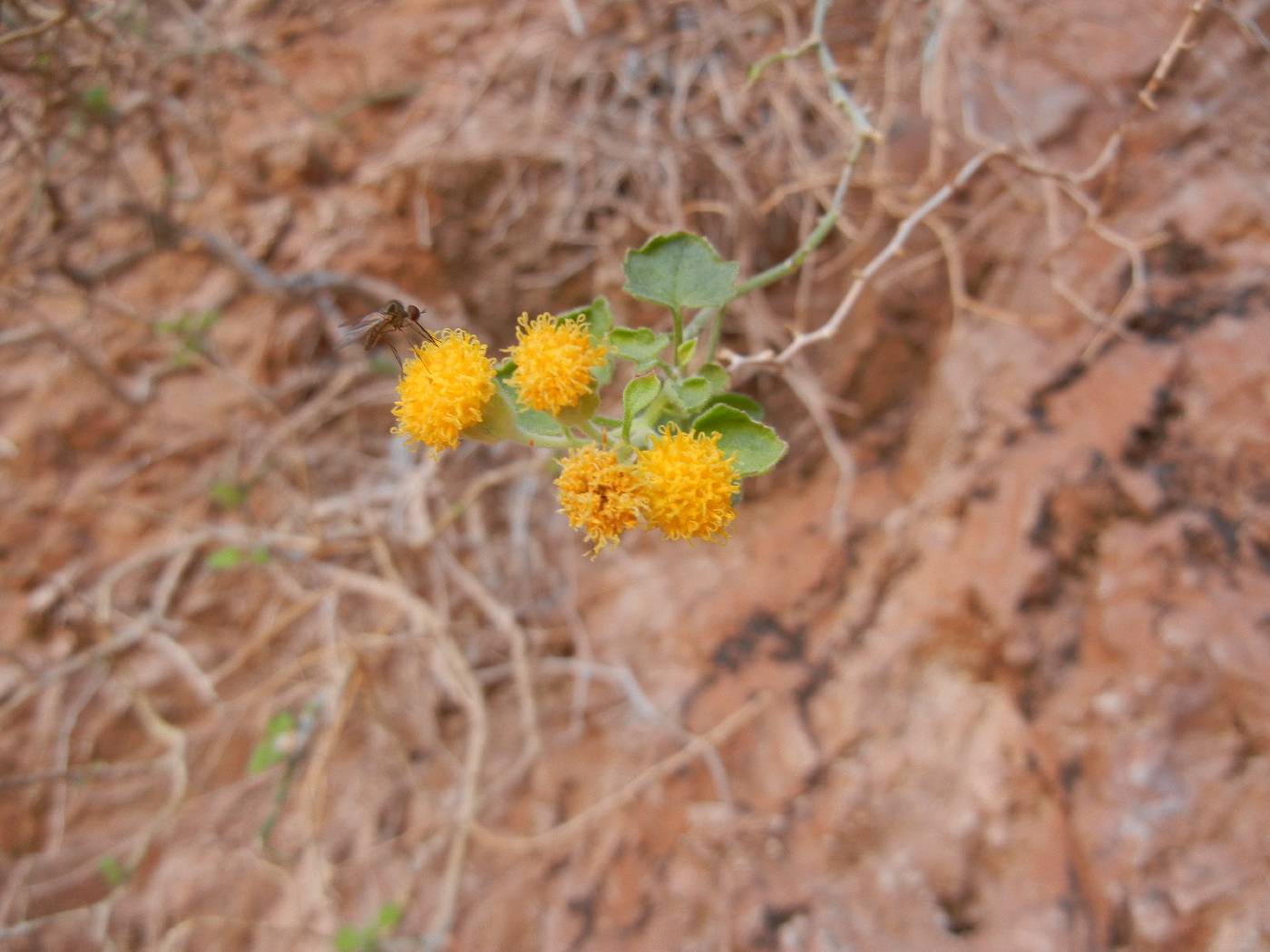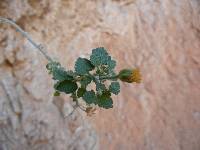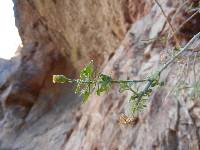Perityle ajoensis
|
|
|
|
Family: Asteraceae
Ajo Rockdaisy
|
Perennials or subshrubs, to 30 cm; usually densely short-tomentose. Leaves (proximally opposite, distally alternate): petioles 3-10 mm; blades deltate, ovate, or suborbiculate, 5-15 × 5-15 mm, margins shallow-crenate to dentate. Heads borne singly or (2-10) in loose, corym-biform arrays, 7-9 × 6-9 mm. Peduncles 5-15 mm. Involucres campanulate to hemispheric. Phyllaries 15-20, oblanceolate to broadly lanceolate, 4-5 × 0.8-1.8 mm. Ray florets 0. Disc florets 20-45; corollas yellow, tubes 1-1.2 mm, throats tubular to narrowly funnelform, 1.3-1.6 mm, lobes 0.4-0.6 mm. Cypselae narrowly suboblong to oblanceolate, 2.5-3.5 mm, margins prominently calloused, short-hairy; pappi of 1(-2) stout bristles 1.8-2.8 mm. 2n = 34. Flowering spring-fall. Crevices of rocky canyon walls and cliff faces; of conservation concern; 800-1200 m; Ariz. Perityle ajoensis occurs in the Ajo Mountains of Organ Pipe Cactus National Monument in Pima County.
FNA 2006, Jepson 2012 Duration: Perennial Nativity: Native Lifeform: Subshrub General: Herbaceous perennials or subshrubs, to 30 cm tall, stems erect to pendent, herbage usually densely short-tomentose. Leaves: Proximally opposite, distally alternate, deltate, ovate, or suborbiculate, 5-15 mm long and wide, margins shallow-crenate to dentate. Flowers: Yellow, in discoid heads, disc florets 20-45, corolla tubes 1-1.2 mm, throats tubular to narrowly funnelform, 1.3-1.6 mm, with 4 lobes to about 0.5 mm long, involucres campanulate to hemispheric, phyllaries oblanceolate to broadly lanceolate, 15-20, 4-5 mm long and 1-2 mm wide, anther tips triangular, style tips tapered, heads borne singly or (2-10) in loose, corym-biform arrays, 7-9 mm long and 6-9 mm wide, borne on peduncles 5-15 mm long. Fruits: Cypselae (achenes) narrowly suboblong to oblanceolate, 2.5-3.5 mm long, margins prominently calloused, short-hairy. Pappi of 1(-2) stout bristles 1.8-2.8 mm long. Ecology: Found in crevices of rocky canyon walls and on cliff faces, from 2,500-4,000 ft (762-1219 m); flowering spring-fall. Distribution: Arizona only. Notes: This species is considered rare or threatened. Jepson used for genus information only for this species. This species is not treated in older versions of Kearney and Peebles. Ethnobotany: Unknown. Editor: LCrumbacher2012 Etymology: Perityle comes from the Greek peri, "around," and tyle, "a callus," and meaning "around the margin," referring to the thick calloused margin of the achenes, while ajoensis means of or from Ajo. |



